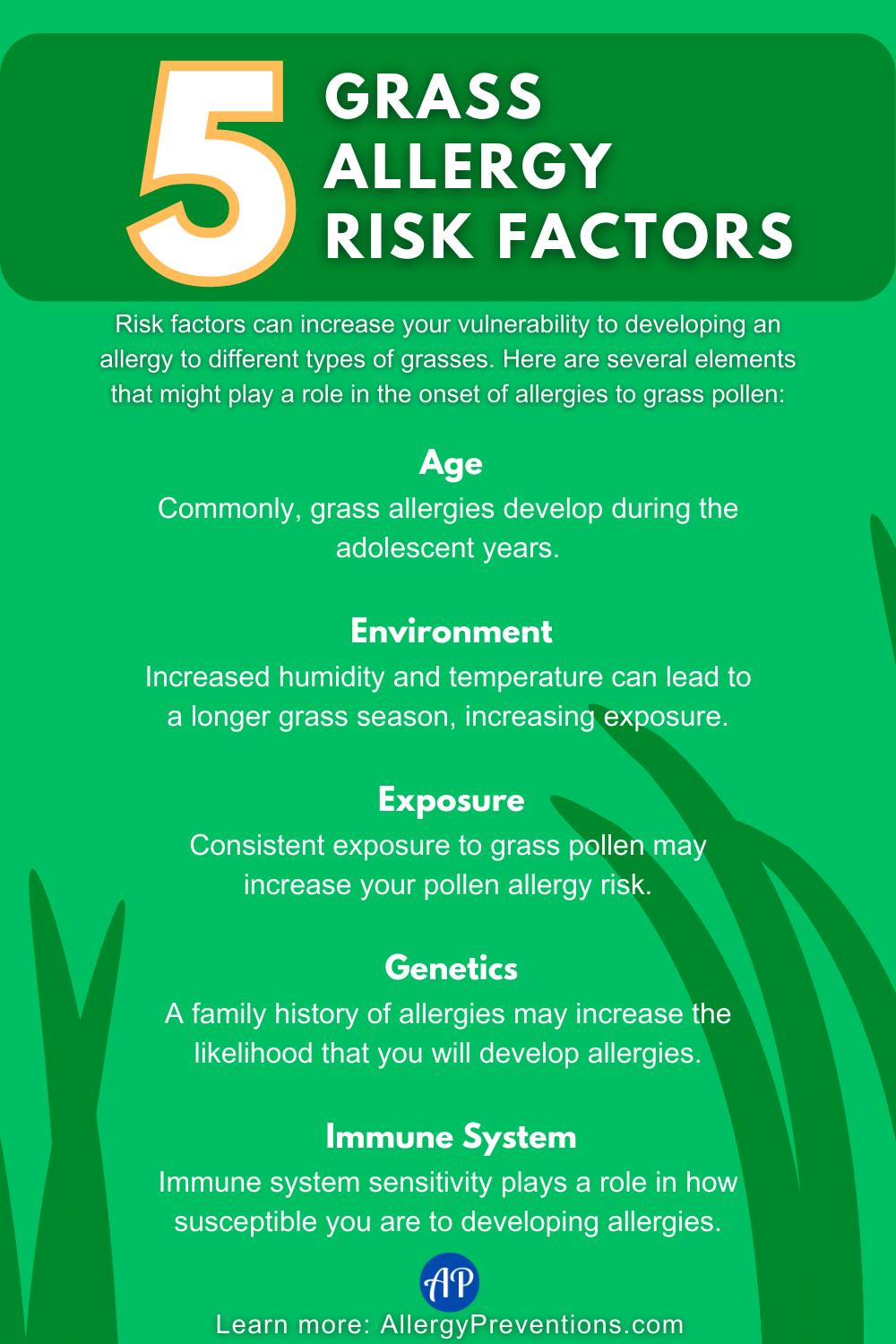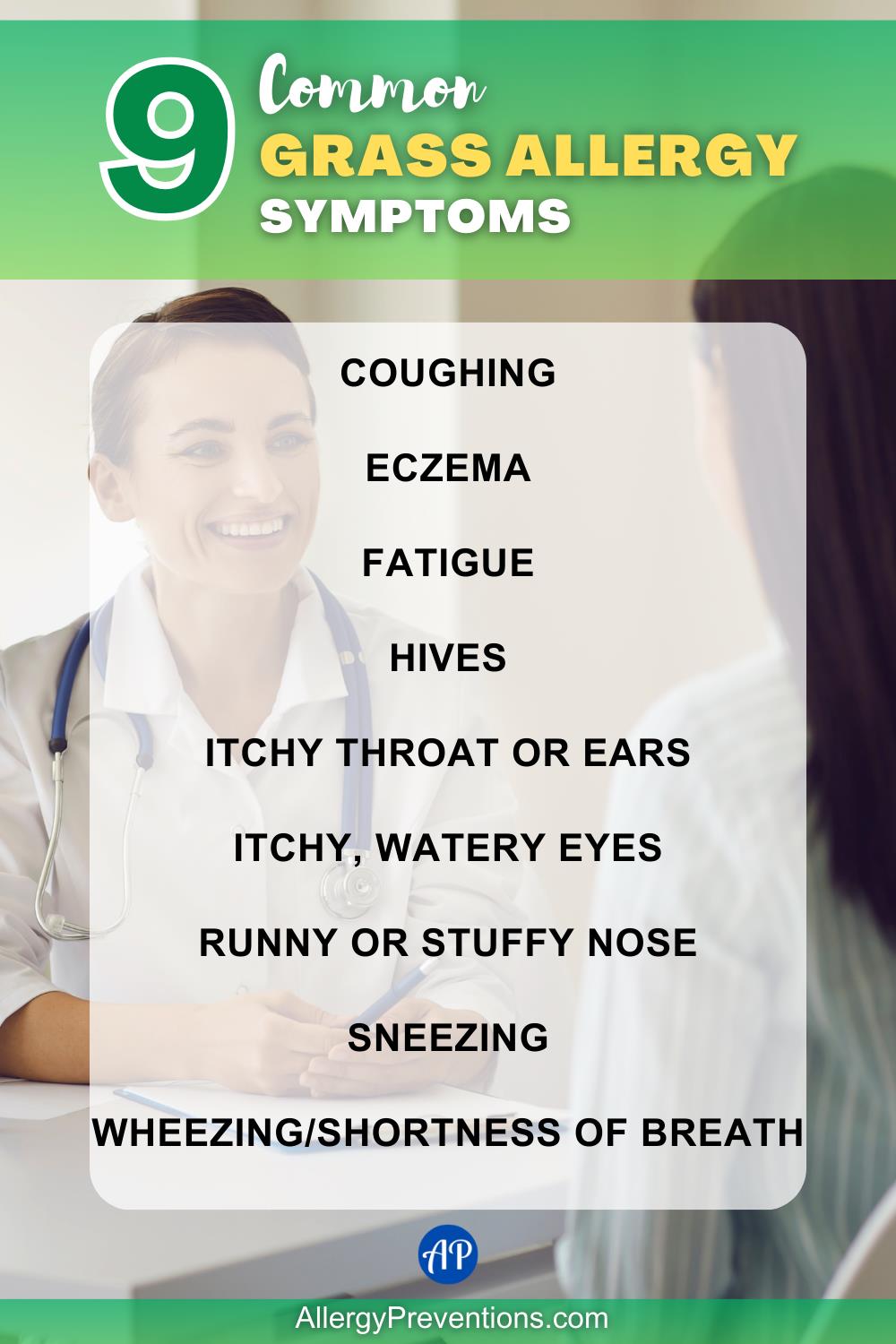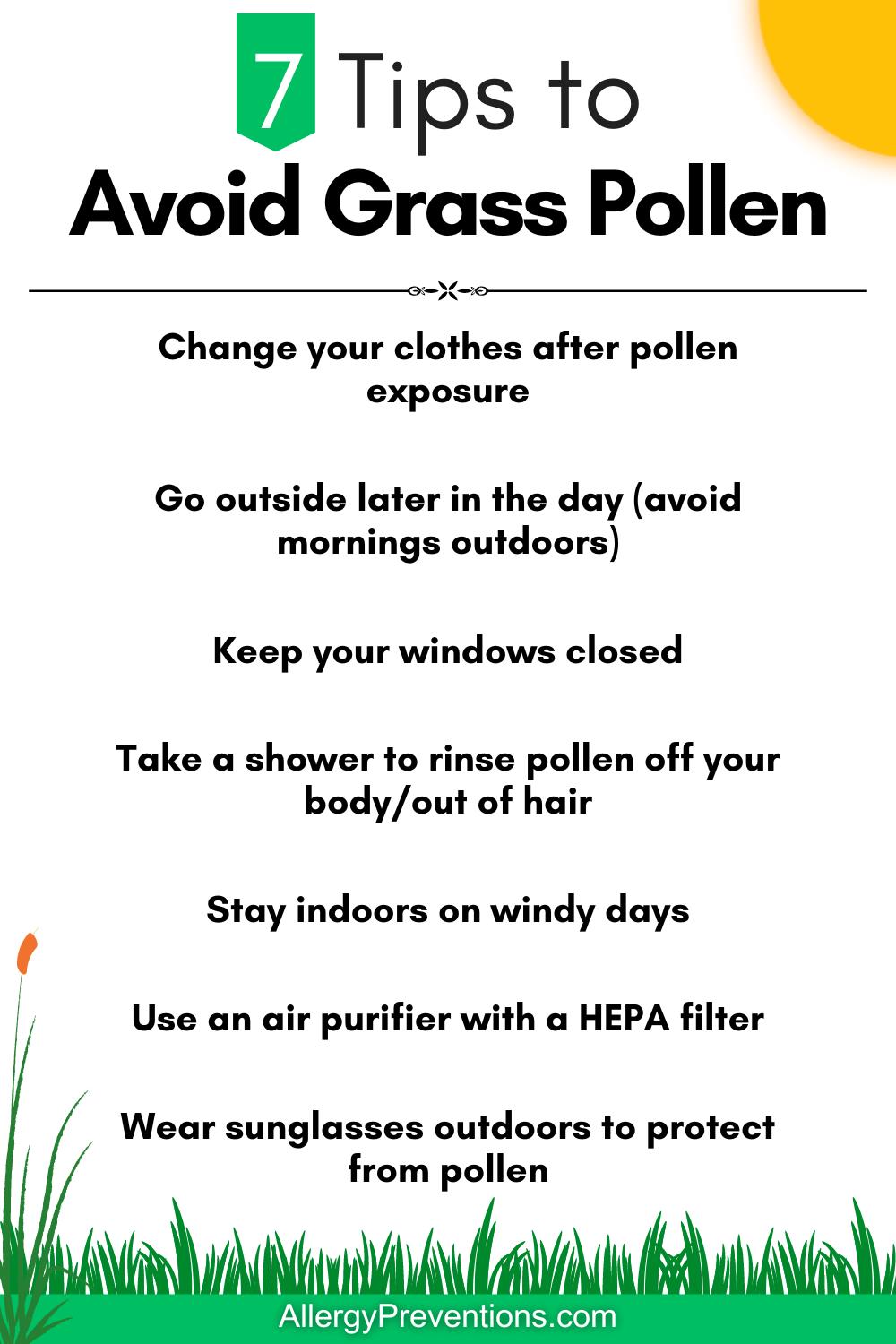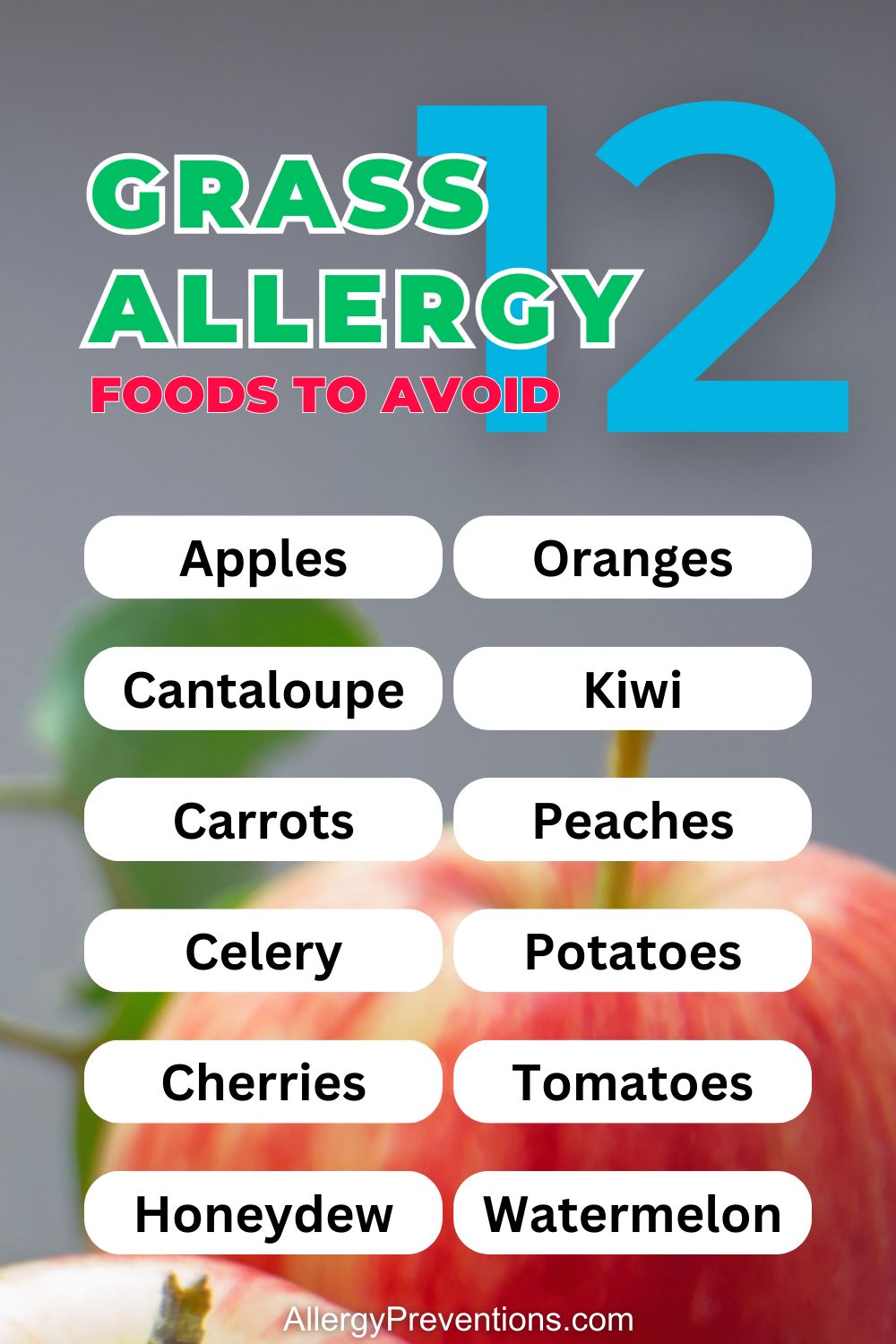The world of grass pollen allergy is a not-so-friendly secret for many of us. As spring arrives, bringing vibrant landscapes and blooming flora, it also heralds the onset of allergy season for countless individuals around the world. Among the various triggers, grass pollen stands out as a common culprit, casting a shadow over outdoor enjoyment.
Let’s embark on a journey to explore the nuances of grass pollen allergies, understanding the symptoms, triggers, and strategies to navigate this often-overlooked aspect of seasonal discomfort.

As an Amazon Associate, I may get compensation for qualifying purchases.
Table of Contents
Introduction to Grass Allergies
Grass allergies are allergic reactions triggered by the pollen released from various grass species during their reproductive phase. Individuals susceptible to these seasonal allergies may experience a range of symptoms, making it crucial to understand and manage this common condition.
Grass is not the only pollen generator. Trees and weeds are also major pollen contributors to pollen allergies.
Bottom line: your body does not like the pollen released from certain types of grass.
Types of Grasses

Different grass species produce varying types of pollen, each with its unique characteristics. Identifying the specific grass causing an allergic reaction is essential for tailored treatment and avoidance. Common grasses that are known to cause allergies include:
- Bermuda Grass
- Johnson Grass
- Kentucky Bluegrass
- Timothy Grass
- Orchard Grass
- Ryegrass
- Sweet Vernal Grass
Individuals may react differently to various grass species, and allergic reactions can vary in severity.
Grass Allergy Risk Factors

Risk factors or situations can make you more susceptible to developing a grass allergy to various grasses. Here are several factors that may contribute to the development of grass pollen allergies:
- Age: Allergies to grass pollen often develop in childhood or adolescence, with symptoms becoming more pronounced during specific times of the year when grasses release pollen.
- Environmental Factors: Certain environmental conditions, such as high humidity and warm temperatures, can contribute to increased grass pollen levels.
- Exposure: Regular exposure to grass pollen can sensitize the immune system and increase the risk of developing an allergy.
- Genetics: A family history of allergies can increase the likelihood of developing a grass allergy. Genetic factors play a role in determining an individual’s susceptibility to allergic reactions.
- Immune System Sensitivity: Some individuals have an inherently more sensitive immune system that reacts strongly to allergens.
Symptoms

The symptoms of a grass allergy are diverse and can include sneezing, itching, runny nose, and watery eyes. Understanding these symptoms is key to early identification and effective management. These common symptoms can vary in intensity and may include:
- Coughing
- Eczema
- Fatigue
- Hives
- Itchy Throat or Ears
- Itchy, Watery Eyes
- Runny or Stuffy Nose
- Sneezing
- Wheezing or Shortness of Breath
It’s important to note that the severity and combination of symptoms can vary from person to person. If you suspect a grass allergy, it’s advisable to consult with a healthcare professional for proper diagnosis and management.
Diagnosis

The diagnosis of a grass allergy typically involves a combination of medical history assessment, physical examination, and specific diagnostic tests. Here are the common steps involved in diagnosing grass allergies:
- Allergy Testing: A Skin Prick Test or blood tests may be administered.
- Medical Imaging: In severe cases or when complications arise, imaging such as chest X-rays may be performed to assess the extent of respiratory involvement.
- Medical History Review: Your healthcare provider will start by asking about your symptoms, including when they first appeared, how often they occur, and if there are any patterns or triggers.
- Physical Examination: This may be conducted to assess any visible signs of allergic reactions, such as skin rashes, nasal congestion, or respiratory issues.
Once diagnosed, appropriate management and treatment strategies, such as allergen avoidance and medication, can be discussed.
Treatment & Survival Tips
The treatment and prevention options for grass allergies aim to manage symptoms and reduce the body’s immune response to grass pollen. The three main options are avoidance, medications, and immunotherapy.
Avoid Grass Pollen

To mitigate the impact of grass pollen allergies, adopting effective avoidance strategies is crucial. During peak pollen seasons, typically spring and early summer, individuals prone to grass allergies can minimize exposure by executing the following:
- Change your clothes after pollen exposure
- Go outside later in the day
- Keep windows closed
- Shower off pollen
- Stay indoors on windy days
- Use HEPA air purifiers
- Wear sunglasses when outdoors
Awareness and proactive measures are key in navigating the allergy season and enjoying the outdoors with greater comfort.
Avoid Foods Cross-Reactive with Grass Pollen

Cross-reactivity occurs when the proteins in certain foods are similar to those found in allergens like grass pollen, leading to allergic reactions in individuals with grass allergies. Here is a list of foods commonly cross-reactive with grass allergies:
- Apples
- Cantaloupe
- Carrots
- Celery
- Cherries
- Honeydew
- Oranges
- Kiwi
- Peaches
- Potatoes
- Tomatoes
- Watermelon
Not everyone with grass allergies will necessarily react to these foods. If you suspect cross-reactivity or have concerns about food allergies, it’s advisable to consult with an allergist for personalized advice and testing.
Medication Options for Grass Allergies

For individuals grappling with the symptoms of grass allergies, a range of medication options can offer relief and improved quality of life. Many over-the-counter and prescription medications can effectively counteract the histamine release triggered by exposure to grass pollen.
- Antihistamines: Over-the-counter or prescription antihistamines can help relieve symptoms like sneezing, itching, and runny nose.
- Decongestants: Oral or nasal decongestants may provide temporary relief from nasal congestion, but they are often not recommended for long-term use.
- Eye Drops: Antihistamine or mast cell stabilizer eye drops can be used to relieve symptoms of allergic conjunctivitis, such as itching and redness.
- Nasal Corticosteroids: Prescription or over-the-counter nasal corticosteroid sprays can reduce inflammation and alleviate nasal symptoms.
You need to consult with healthcare professionals to determine the most suitable medication approach based on the severity of your symptoms and overall health.
Immunotherapy Options

In more severe cases, allergists may recommend immunotherapy, involving regular injections or under-the-tongue tablets, to desensitize the immune system to grass pollen over time.
Allergy Shots
Allergy shots, also known as immunotherapy, are a helpful solution for people dealing with pollen allergies. These shots work by introducing small amounts of allergens, like pollen, into the body over time.
The treatment involves a series of regular injections, gradually building the body’s tolerance. Over time, many people find that their allergy symptoms improve, and some may even experience a long-term decrease in sensitivity.
I have been getting allergy shots for a few years now, and I have noticed my allergy symptoms have gotten much better. I am allergic to all grasses, weeds, and trees, and since starting the shots I have been able to cut way back on my allergy medications.
Sublingual Immunotherapy
Sublingual Immunotherapy, or SLIT, is a friendly alternative for tackling allergies, offering a convenient and needle-free approach. Instead of getting shots, SLIT involves placing a small amount of allergen extract, like pollen, under the tongue.
This helps the immune system gradually build tolerance to specific allergens, reducing the severity of allergic reactions over time. SLIT is easy to administer at home, making it a practical option for many.
As always, it’s crucial to consult with your healthcare provider to determine if Allergy shots or SLIT is the right fit for your allergy management journey.
Looking for a more natural treatment approach? Check out the 15 Natural Pollen Allergy Remedies article next.
Final Thoughts

Understanding grass pollen allergies is the first step toward effective management. By implementing just one or two changes, you can see a big change in your grass allergies for the better!
My recommendation is to get a HEPA air filter if you do not already have one. This was the biggest game changer in our house, and now we have an air purifier in every room.
Large Room

There are countless options for HEPA filters, so I will just share with you what we know works for us. For our main living space, we use the Winix 5500-2 Air Purifier and have a full review here.
Bedrooms

In each of the bedrooms, we have the Levoit 3-in-1 air purifier. This option is affordable with reasonably priced replacement filters. A win-win if you ask me!
